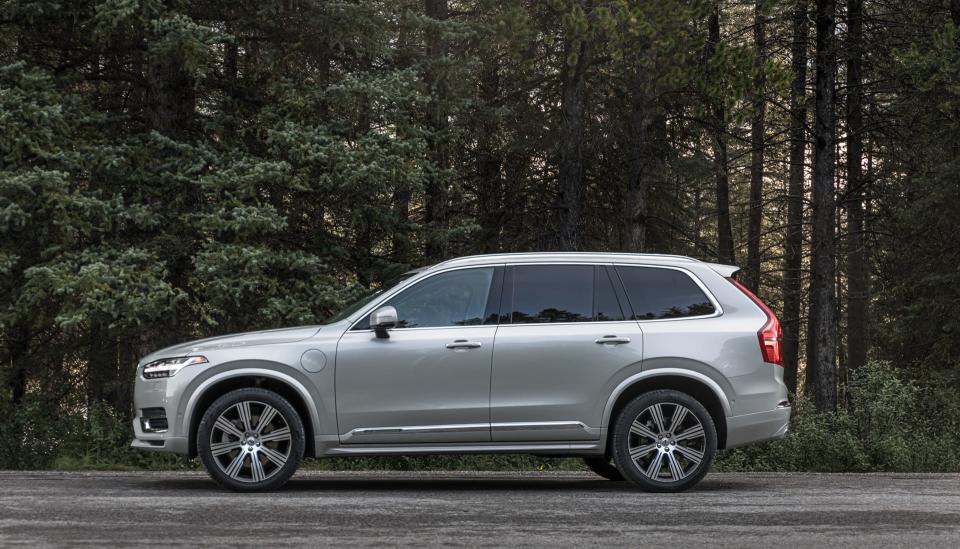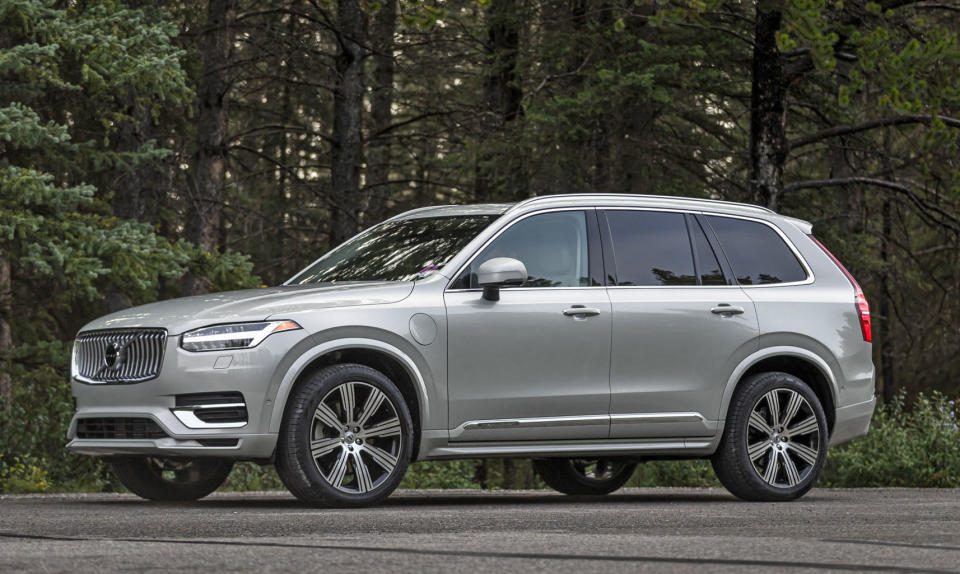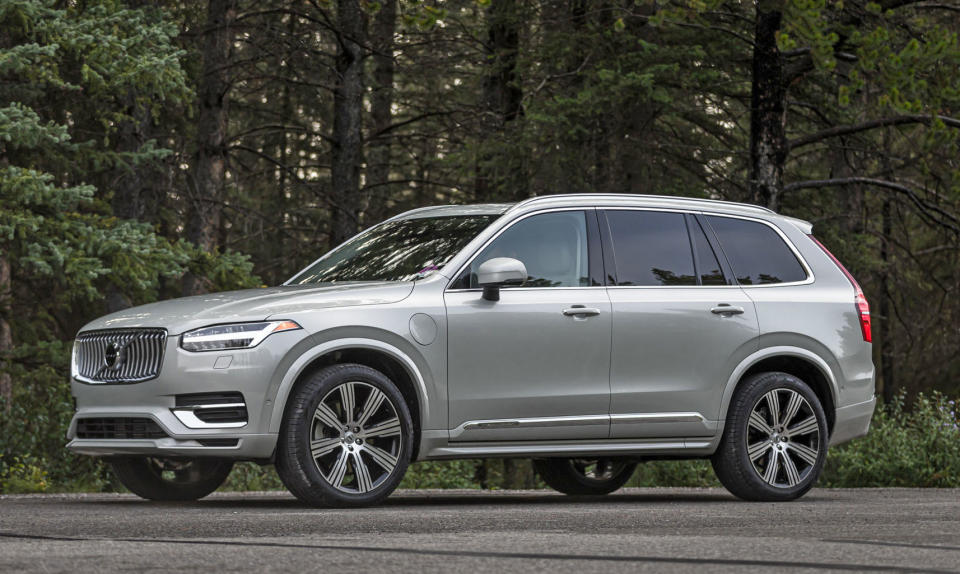Volvo’s XC90 brings Swedish minimalism to a sea of luxury SUVs
The SUV looks good and comes with an impressive amount of tech.
There's one word to describe Volvo's high-end SUV offering: smooth. The ride is smooth. The steering is smooth. The braking is (now) smooth. The interior? Smooth. It's like a serene lake in Sweden that also has massage seats. If only it had more USB ports.
The XC90 is the pinnacle of the new Volvo. An automaker that's leaned into its minimalist design aesthetic while delivering a smart luxury experience that also dabbles in performance. I had a few hours behind the wheel of the high-end T8 E-AWD Inscription plug-in hybrid version of the XC90. It had all the bells and whistles and a price point to match ($86,990).
The starting price of the XC90 is $47,700. So like most luxury vehicles, you can price it up pretty quickly.
But that escalation in monthly payments for the XC90 is how you get that hybrid drive. It's coupled with a 2.0-liter turbo and supercharged engine that delivers 400 horsepower and 472 foot-pounds of torque. It's not an SUV rocket like the Polestar-engineered XC60, instead, all that power makes sure that a large SUV always has enough gusto to enter freeways and pass slower vehicles without issue. I was never wanting for more power and the hybrid powertrain offers up an ecofriendly-ish alternative to driving.
Sadly, I was unable to test EV-only range via Pure mode. The mode prioritizes battery for locomotion. Instead, I can say that cruising on the highway, it's more than adequate for a leisurely drive. It's available at speeds up to 78 miles per hour, and it's probably far better for city driving where the battery won't be drained quickly by high speeds.

Steering is quick without being twitchy. While cornering I was met with very little body roll for a vehicle of the XC90's size. Still, most of my drive was on a highway, so there was very little chance to push the vehicle's suspension too much.
That consistent driving did give me the opportunity to test Volvo's driver's assistance features. The adaptive cruise control was on point with smooth acceleration and braking when people cut-in. The system also reacts to changing road conditions and adjusts the speed accordingly, putting it on-par with offerings from other luxury brands like Mercedes.
The lane-keep assist was impressive and on par with Mercedes' offering. Very few, if any sharp high corners tripped it up. It kept a solid line in the center of the lane. It did get confused by one off-ramp, but overall, it's a great system.
Volvo's steering wheel controls make managing the ADAS (Advanced Driver-Assistance Systems) a breeze to understand via the steering wheel buttons.
That design aesthetic permeates the entire vehicle. It's minimalistic while still having physical buttons for things like controlling the volume. Everything is where you would expect it and it looks good.

That seeps into the automaker's Sensus infotainment system. It's different from anything else on the market by placing the display and layout vertically. It's easy to use and thanks to a processor upgrade, it's quicker than before (I saw no noticeable latency). One of the benefits of the layout is that CarPlay and Android don't take over the entire display when enabled. So you still have quick access to Volvo-centric features.
My biggest complaint about the XC90 was the lack of rear USB ports. It seems like a weird oversight for a tech-heavy vehicle.
Even without those ports (but seriously, put more ports in the car for the next iteration), the XC90 has evolved in the right direction. A few design changes in the exterior actually make the already good-looking car better and the exterior is still one of my favorites. While the top-of-the-line version is pricey, I suspect that hybrid powertrain will pull in a lot of potential buyers. Because reducing your carbon footprint is important, but so is a good-looking vehicle that drives great.



